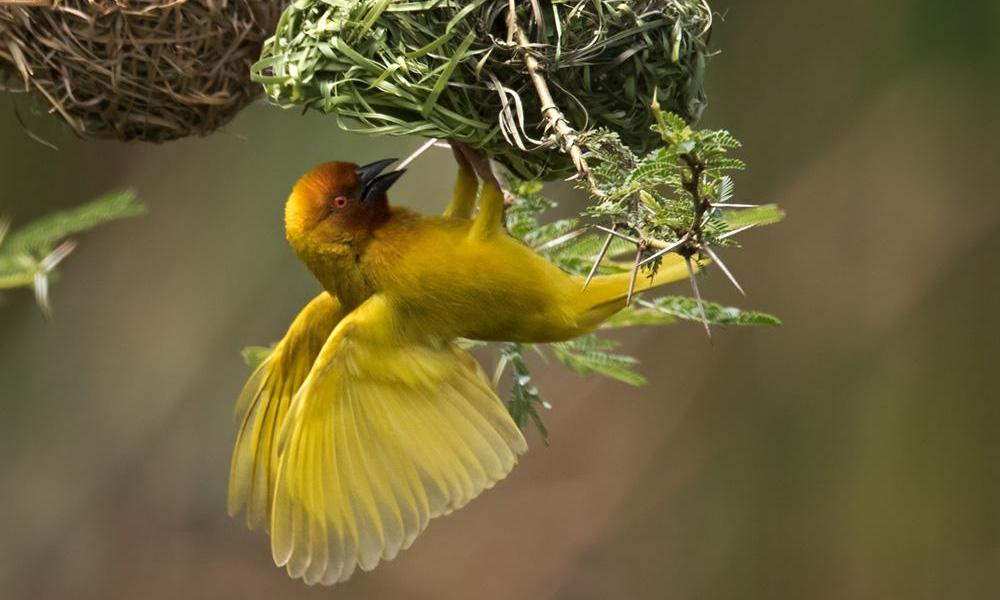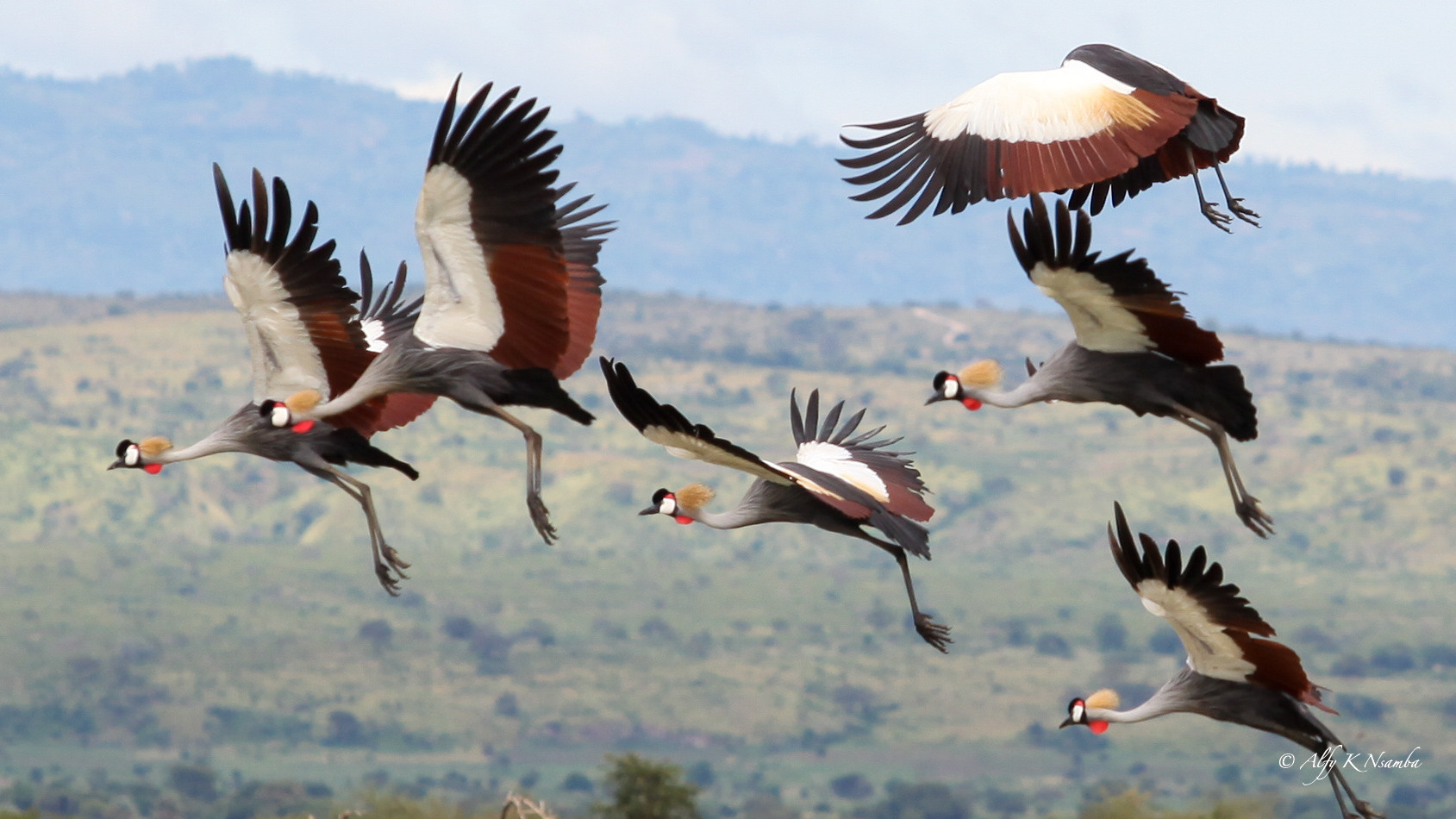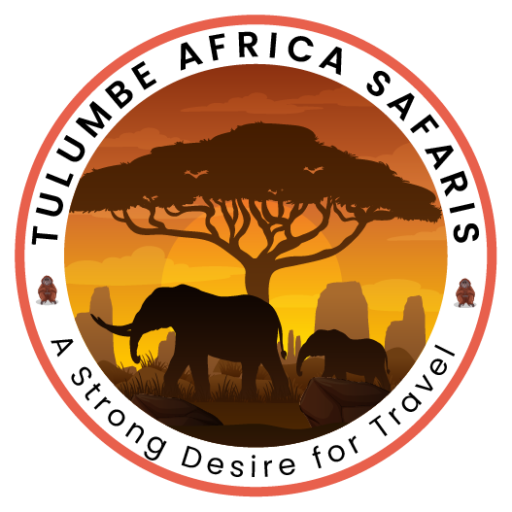The largest wildlife reserve in Uganda is Murchison Falls National Park. Located in the northwestern part of the country, this extraordinary reserve covers an expansive area of approximately 3,840 square kilometers (1,480 square miles). It is renowned for its remarkable biodiversity, stunning landscapes, and thrilling wildlife encounters.
With its diverse habitats ranging from savannah grasslands and woodland forests to the majestic Victoria Nile River, Murchison Falls National Park boasts an impressive array of wildlife. It is home to over 76 species of mammals, including elephants, lions, giraffes, hippos, and the rare Rothschild’s giraffe. The park also hosts over 450 bird species, making it a paradise for birdwatchers.
In addition to its abundant wildlife, Murchison Falls National Park is famous for its namesake waterfall, where the Nile River cascades through a narrow gorge, creating a breathtaking spectacle. This natural wonder attracts visitors from around the world who come to witness the dramatic force of water as it plunges down the falls.
Embark on an unforgettable journey to Murchison Falls National Park, the largest wildlife reserve in Uganda, and immerse yourself in the untamed beauty of this remarkable destination. Explore its vast wilderness, encounter iconic wildlife, and marvel at the raw power of the Murchison Falls. It’s an experience that will leave you in awe and create memories to last a lifetime.
| Specification | Details |
|---|---|
| Size | Approximately 3,840 square kilometers (1,480 square miles) |
| Location | Northwestern Uganda |
| Surrounding Areas | Karuma Wildlife Reserve Bugungu Wildlife Reserve Kaniyo Pabidi Forest Reserve Budongo Forest Reserve |
| Wildlife | Over 76 species of mammals, including elephants, lions, giraffes, hippos, and more |
| Bird Species | Over 450 species |
| Main Attraction | Murchison Falls – a spectacular waterfall on the Nile River |
| Key Features | Savannah grasslands, woodland forests, Victoria Nile River, diverse ecosystems |
| Activities | Game drives, boat safaris, nature walks, birdwatching, hiking to the falls |
Species Diversity of the Park
Murchison Falls National Park is not only the largest wildlife reserve in Uganda but also boasts an impressive species diversity. This remarkable park is home to a wide range of plant and animal species, creating a thriving ecosystem that attracts nature enthusiasts from around the world.
In terms of mammals, Murchison Falls National Park hosts over 76 species. This includes iconic African wildlife such as elephants, lions, leopards, buffaloes, giraffes, and hippos. The park is also known for its population of the rare Rothschild’s giraffe, which can be spotted gracefully roaming the savannah.
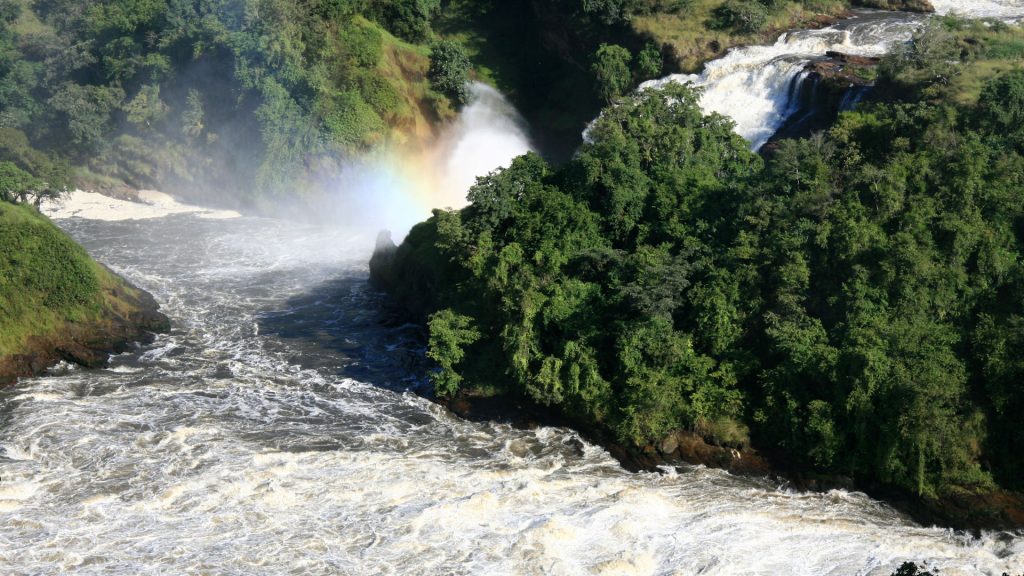
Birdwatchers will be delighted to know that Murchison Falls National Park is a paradise for avian enthusiasts. With over 450 bird species recorded, the park offers an incredible diversity of feathered creatures. From the majestic African fish eagle to the vibrant Goliath heron, the park’s birdlife is a sight to behold. Visitors can witness various waterbirds, raptors, and woodland birds, making it a haven for birdwatching enthusiasts.
| Species | Description | Size | Estimated Numbers |
|---|---|---|---|
| African Elephant | An iconic and majestic mammal known for its size and tusks. | Up to 3 meters tall (at shoulder) | Approximately 2,500 individuals |
| African Lion | A powerful predator and symbol of African wildlife. | 1.2 to 1.5 meters tall (at shoulder) | Approximately 150 individuals |
| African Buffalo | A large and robust bovine species that thrives in grassland habitats. | 1.2 to 1.7 meters tall (at shoulder) | Approximately 2,000 individuals |
| Leopard | A stealthy and elusive big cat, renowned for its agility and camouflage. | 0.6 to 0.75 meters tall (at shoulder) | Approximately 200 individuals |
| Giraffe | An iconic long-necked mammal with distinct patterning on its coat. | 5 to 6 meters tall | Approximately 1,500 individuals |
| Hippopotamus | A semi-aquatic mammal known for its massive size and formidable presence. | 1.5 to 1.8 meters tall (at shoulder) | Approximately 4,000 individuals |
| Nile Crocodile | A fearsome reptile found near water bodies, known for its powerful jaws. | 3 to 5 meters long | Approximately 1,000 individuals |
| Rothschild’s Giraffe | A rare subspecies of giraffe with unique coat patterns and ossicones. | 5 to 6 meters tall | Approximately 800 individuals |
| African Fish Eagle | A striking bird of prey with a distinctive call and impressive hunting skills. | 65 to 75 centimeters tall | Approximately 500 individuals |
| Goliath Heron | A magnificent and tall wading bird, commonly found near water sources. | 1.2 to 1.5 meters tall | Approximately 300 individuals |
The park’s vegetation is equally diverse, with different ecosystems present throughout its vast expanse. The Nile River, woodlands, savannahs, and swamps support a wide array of plant species, contributing to the overall ecological richness of the park.
Exploring Murchison Falls National Park allows you to immerse yourself in this incredible species diversity. From spotting the “Big Five” to marveling at the numerous bird species and experiencing the park’s unique vegetation, every moment spent in this natural wonderland is a true delight for nature lovers and wildlife enthusiasts.
Habitat of the Park
With its diverse habitats, the park provides an unexpected oasis for the animals that call it home – from small critters to majestic beasts!
Uganda’s largest wildlife reserve is Murchison Falls National Park. The park has a savannah-woodland habitat as well as swamp and forest ecosystems. This variety of habitats allows for a wide range of species to thrive in the area, providing shelter and food sources for many animals.
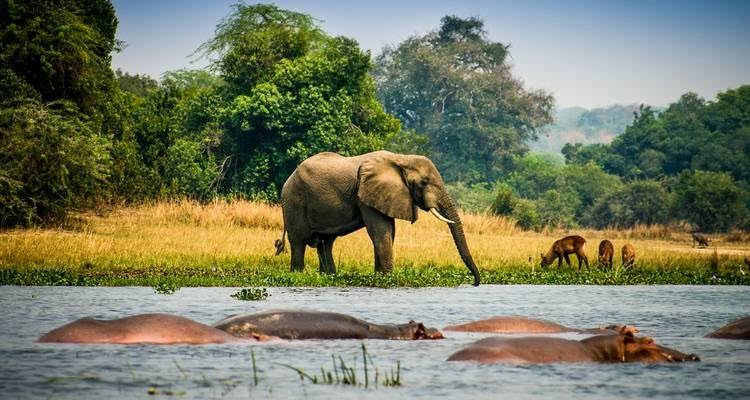
The climate of Murchison Falls National Park ranges from tropical to subtropical. However, recent changes due to climate change have caused some areas of the park to become drier than they previously were which can have an impact on certain species who rely on more moist environments. Poaching also continues to be a major threat within this ecosystem, further reducing animal populations in some areas.
Despite these challenges, Murchison Falls National Park remains one of Uganda’s most important protected areas with numerous endangered species living among its varied landscapes. As such, conservation efforts are essential in order to ensure that future generations will be able continue enjoying the wildlife found in this unique national park and its surrounding environment.
Moving forward, understanding how climate change and poaching impacts are affecting these habitats will help shape strategies designed to protect them into the future as we move onto exploring the flora of the park next.
Flora of the Park
Murchison Falls National Park contains an abundance of diverse flora, ranging from savannah woodlands to swamps and forests, providing a wealth of sustenance for the animals that inhabit it. The park is home to over 500 species of trees and shrubs, with some dating back centuries.
Additionally, Murchison Falls has a variety of medicinal plants and flowers that are used in educational programs or as tourist attractions. The diverse vegetation found in the park includes grasses, herbs, shrubs and trees that provide habitat for many different species of wildlife.

A number of protected areas have been established within the park where endemic plant species can be observed such as: Acrocarpus fraxinifolius (a rare tree), Cynometra spp., Afzelia africana (African mahogany) and Detarium senegalense (pear-shaped). Along with these unique plants there are also numerous types of wildflowers which can be seen throughout the park during certain times of year.
The abundant flora provides food sources for both large herbivores such as elephants and smaller creatures like birds, resulting in a wide range of fauna residing in Murchison Falls National Park. It is this combination of flora and fauna which makes it one of Uganda’s most popular national parks – drawing thousands upon thousands each year to its lush landscapes as they look out over stunning views while discovering its natural wonders.
With its diversity of plant life intertwined with vibrant wildlife populations, Murchison Falls is truly a sight to behold – making it Uganda’s largest wildlife reserve.
Fauna of the Park
Experience the awe-inspiring beauty of Murchison Falls National Park’s extraordinary array of wildlife, from the majestic elephants to the vibrant flocks of birds – a sight not to be missed! The park is home to around 76 species of mammals and over 451 bird species, including some endangered species such as Rothschild’s Giraffe. It also has an abundance of reptiles and other amphibians, like crocodiles and monitor lizards.
Climate change has caused some shifts in animal populations in recent years, but the biodiversity remains largely intact. The reserve is known for its large predators like lions, leopards, hyenas, and African wild dogs, all on display with their distinct hunting behaviours. Visitors can also view antelopes such as Uganda kob and bushbuck among others. There are many small mammal species too such as squirrels, civets and mongooses that make up the diverse fauna at Murchison Falls National Park.
It’s truly a magical experience to witness these animals in their natural habitats as they go about their daily routines or interact with prey or predator alike. Moving on from this fascinating insight into Murchison Falls’ wildlife, we now turn our attention to activities available within the park itself for visitors to enjoy….
Activities in the Park
Visitors to Murchison Falls National Park will no doubt be delighted by the multitude of activities available, from game drives to boat cruises – there’s a little something for everyone’s taste!
As the old saying goes, ‘variety is the spice of life’ and this park has plenty of it. Wildlife watching is an especially popular activity in Murchison Falls National Park. There’s a wide variety of wildlife here, including lions, elephants, buffaloes, leopards and giraffes. For bird lovers, there are also many different species present such as Kingfishers, eagles and hammerkops.
Boat cruises on the Nile offer visitors a unique opportunity to observe these animals up close. They also give visitors views of one of Uganda’s most awe-inspiring natural wonders – Murchison Falls itself. There are also birding tours available at certain times if you want to really get up close and personal with some of the park’s feathered inhabitants.
The park also offers fishing trips either on land or out on Lake Albert. This provides an excellent opportunity for anglers hoping to catch species such as tilapia or barbel-carp. The scenery around the lake is also stunning making it a great place to spend time outdoors admiring nature in all its glory while breathing in some fresh air.
For those who just want to relax, there are plenty of spots around the park perfect for unwinding from all your adventures or simply enjoying a picnic under the shade of ancient trees.
No matter what type of activity you’re looking for, Murchison Falls National Park has something that will appeal. So why not take advantage and come explore this wonderful region? From leisurely strolls along serene riversides to daring expeditions across savannahs full of wild beasts – whatever your preference may be – this remarkable reserve has something special waiting for everyone!
Conservation efforts have been ongoing to improve habitat conditions, ensuring animal populations remain healthy within their environment.
| Activities | Description |
|---|---|
| Game Drives | Embark on thrilling game drives to explore the park’s diverse wildlife, including elephants, lions, giraffes, and more. |
| Boat Safaris | Take a boat safari along the Nile River to witness hippos, crocodiles, and a variety of bird species in their natural habitat. |
| Hiking to the Top of Murchison Falls | Trek to the top of the majestic Murchison Falls and witness the dramatic force of the Nile River as it squeezes through a narrow gorge. |
| Chimpanzee Tracking | Join a guided trek through the lush forests to encounter our closest relatives, the chimpanzees, and observe their behavior. |
| Bird Watching | Discover the incredible avian diversity of Murchison Falls National Park, with over 450 species of birds to spot, including the iconic shoebill stork. |
| Nature Walks | Embark on guided nature walks to explore the park’s varied landscapes, encounter smaller wildlife, and learn about the local flora and fauna. |
| Cultural Visits | Engage with the local communities neighboring the park, learn about their traditions and way of life, and participate in cultural activities. |
| Fishing | Enjoy the thrill of sport fishing on the Nile River, known for its abundant population of Nile perch and catfish. |
Conservation Efforts in the Park
You can be part of the journey to protect and preserve a unique ecosystem by visiting Murchison Falls National Park, an incredible reserve full of amazing sights and sounds. Conservation efforts in the park focus on researching the impact of climate change, as well as exploring local communities.
Here are some of the ways you can help with these efforts:
- Participate in research surveys to collect data on wildlife populations
- Join guided eco-tours and activities that support conservation initiatives
- Support educational programs for local schools, encouraging children to learn more about their environment
- Volunteer with conservation groups that work actively in Murchison Falls National Park.
These initiatives not only help conserve this majestic park but also empower local communities with knowledge and skills that they can use to protect their own natural habitats. By supporting these projects, both visitors and locals alike have a chance to invest in preserving nature’s wonders found within Murchison Falls National Park.
With ongoing research, education, and community outreach programs, this land is sure to remain wild for centuries to come!
Frequently Asked Questions
What is the best time of year to visit the Queen Elizabeth National Park?
If you’re looking for an unforgettable wildlife experience, then Queen Elizabeth National Park in Uganda is the place to visit. From June to September, the park is home to some of Africa’s most remarkable animal sightings and bird watching opportunities.
During this time, visitors can spot numerous species of mammals throughout the park as well as several species of birds including African skimmers, long-tailed cormorants, pink-backed pelicans, and pied kingfishers. The park also offers guided game drives which are a great way to explore its diverse landscapes and discover even more animals hidden amidst lush forests and grassy plains.
With so much natural beauty and wildlife on offer, Queen Elizabeth National Park is truly one of East Africa’s premier destinations.
How much does it cost to enter the park?
The cost of entering the Queen Elizabeth National Park is very cost-effective. The park charges an entry fee of roughly UGX 5,000 (about $1.30 USD) for adults and UGX 2,500 (about $0.70 USD) for children under 12 years of age to help manage wildlife in the park effectively.
Visitors can also purchase a 3-day pass which offers discounted rates at UGX 10,000 (about $2.60 USD) for adults and UGX 8,000 (about $2.20 USD) for children under 12 years of age. These fees are subject to change depending on the time of year and other factors related to wildlife management in the park, so it’s best to check with local authorities before making a visit.
Are there any accommodations available within the park?
Yes, there are accommodations available within the park. The largest wildlife reserve in Uganda is Murchison Falls National Park.
Within the park, you can find a variety of accommodation options to suit different budgets and needs. For example, there are lodges for those looking for luxurious wildlife viewing experiences and campsites for budget-minded adventurers.
You’ll also find restaurants, bars, and other amenities to make your stay enjoyable. Whether you’re looking for a relaxing retreat or an exciting adventure, Murchison Falls has something to offer everyone!
Is there any public transportation to the park?
Yes, there’s public transportation available to the largest wildlife reserve in Uganda. Buses run from several cities throughout the country, making it easy to get to the park. Hiking trails and wildlife viewing are popular activities within the park. Make sure to read up on the schedule before you go so that you know which option works best for your trip.
Note: Contractions have been used and the sentences have been logically grouped with a double new line after each group.
Are there any special safety precautions to be aware of when visiting the park?
When visiting Uganda’s largest wildlife reserve, it’s important to be aware of safety precautions. Human-wildlife conflicts can occur, so visitors should stay on established paths and trails and avoid entering areas where animals are known to inhabit.
Additionally, be sure to keep any food or other items that may attract wild animals out of sight and locked away. Animal tracking methods such as infrared cameras may also be used in the park, so visitors should be mindful of their presence if they encounter one.
Following these tips will ensure a safe and enjoyable experience while exploring the wildlife reserve.
Conclusion
You’ll love the Queen Elizabeth National Park! It’s the largest wildlife reserve in Uganda, boasting a wide variety of species, habitats, and flora.
There are plenty of activities to enjoy within the park – from game drives to boat cruises – so you’re sure to never get bored.
Plus, conservation efforts have been made to protect endangered species and preserve ecosystems.
You may worry it won’t be worth your time or money, but trust us – it’s a once-in-a-lifetime experience that will stay with you forever!
So why wait? Get out there and explore the wonders of this magnificent wildlife reserve.



